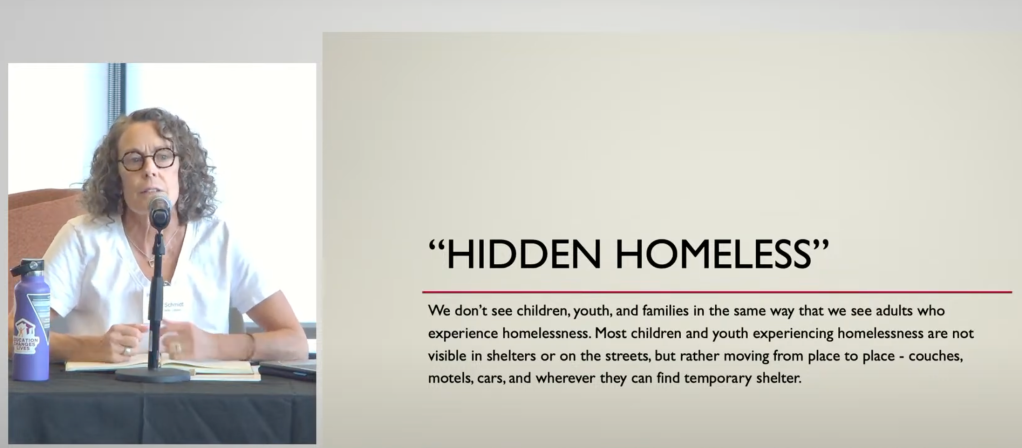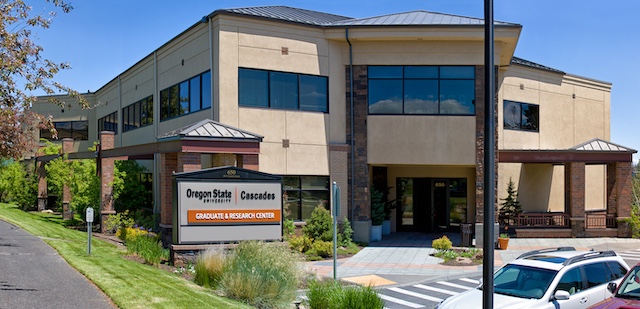Editorial: Finding common ground in Deschutes County on homelessness
Published 5:00 am Wednesday, November 20, 2024

- Sandy Schmidt of the Bend-La Pine School District gives a presentation on homeless students in the schools to the Deschutes Civic Assembly.
What if residents in Deschutes County could do something extra special? What if they could take on youth homelessness, get people talking about it, prioritize solutions and take action?
It’s happening through the Deschutes Civic Assembly. A group of randomly selected residents who came together to learn about youth homelessness and prioritize solutions.
Trending
At a time when so many people seem to believe that Americans of different backgrounds and beliefs are doomed to divisiveness and polarization, these people have shown common ground can be found.
The numbers for youth homelessness are dismaying. The Bend-La Pine Schools had 543 students fitting the definition of homeless last year. There were 259 in elementary school, 106 in middle school and 178 in high school. Most were living in housing arrangements where they were doubled up. Students were also in shelters, unsheltered or in a hotel or motel.
The consequences in school are many. In Bend-La Pine Schools, the attendance rate is poorer. Homeless students are much more likely to be chronically absent at 69%. And the graduation rate is only 69%, about 15 percentage points less than the rate for all students.
The Deschutes Civic Assembly took on youth homelessness to maybe turn some of those numbers around. A group of about 30 residents, broadly representative of the county, were selected by lottery. They met over five days and some 35 hours. They learned about youth homelessness and possible solutions, through listening to homeless youth and a broad range of other speakers.
Are you skeptical that it could work?
Many participants came in skeptical — that they could make progress, that they would be heard, that the effort would devolve into polarization. What happened was people finding they could work together.
Trending
They came up with a list of 23 prioritized recommendations. The top of the list: Helping 18-year-olds to better transition from the state’s foster care system. It’s not easy to fix. It is a good signal to policymakers about what Deschutes County residents identify as most critical.
Further down the list, was more of a declaration of concern for a policy that “drops” McKinney-Vento students. Homeless students are often referred to as McKinney-Vento students because the McKinney-Vento Homeless Assistance Act is the lead federal legislation relating to education and homeless youth.
“A school district policy that automatically drops McKinney-Vento students after 10 days of unexcused absence, with no regard for the causes of the absences, the impact of homelessness, or interventions to support attendance, is a serious violation of the McKinney-Vento Act,” the recommendation says.
We checked into that with help from the Bend-La Pine School District. It’s actually a state policy, not a school district policy. It’s to ensure that after 10 consecutive unexcused absences, students are disenrolled, so districts are not receiving funding for students who are not attending. The Bend-La Pine School District does not abandon homeless students if they have those 10 absences.
“For students eligible for McKinney-Vento services, we make enrollment and re-enrollment as simple and hassle-free as possible,” Scott Maben, communications director of the Bend-La Pine School District told us in an email. “Those students do not need to provide documentation of their current residence, immunization requirement records, prior school records, or even proof of age. Our McKinney-Vento coordinator works closely with the students and their families to determine what they need to support regular attendance and connect them to those resources. That includes clothing, food, school supplies, and Internet access.”
What would be evidence of success of the Deschutes Civic Assembly? Is producing recommendations enough? Does it have to be substantive policy change and improvement in youth homelessness? Is it if it leads to more civic assemblies on different topics?
It may be altogether more basic. It’s more proof for a model of how divides can be bridged, people can disagree respectfully and find ways to make productive contributions to societal problems.
There is more information about the effort here: cocap.us/homelessness.








